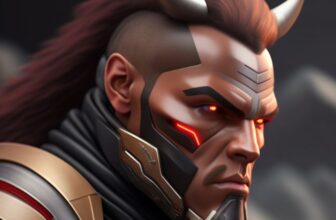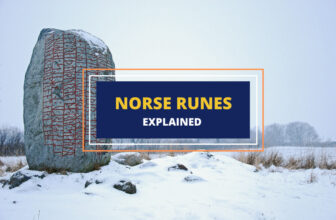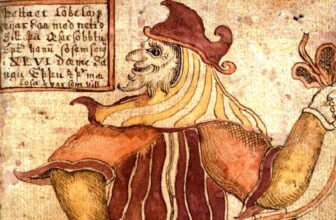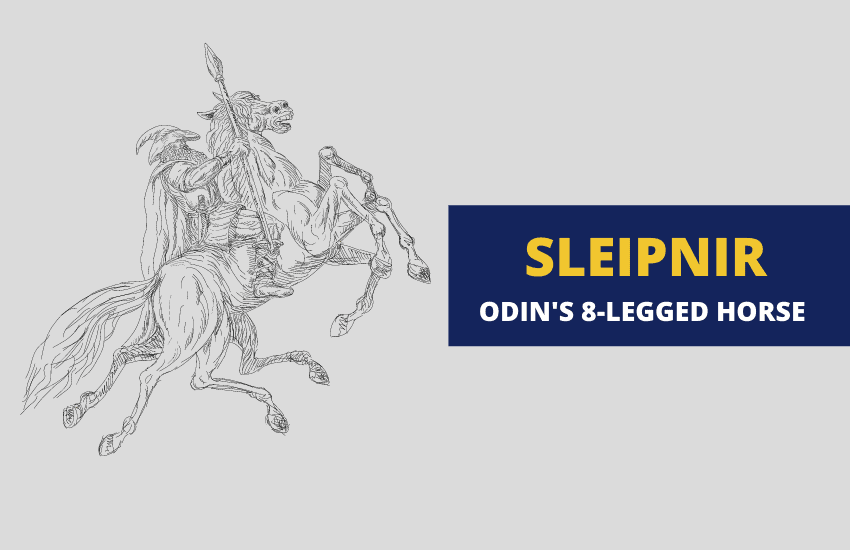
Table of Contents
Sleipnir is the most legendary horse in Norse mythology and arguably one of the most famous horses throughout all of the world’s religions. With eight powerful legs, a fascinating and funny backstory, Sleipnir carries Odin on his back through countless sagas and adventures, from the founding of Asgard to the last battle Ragnarok.
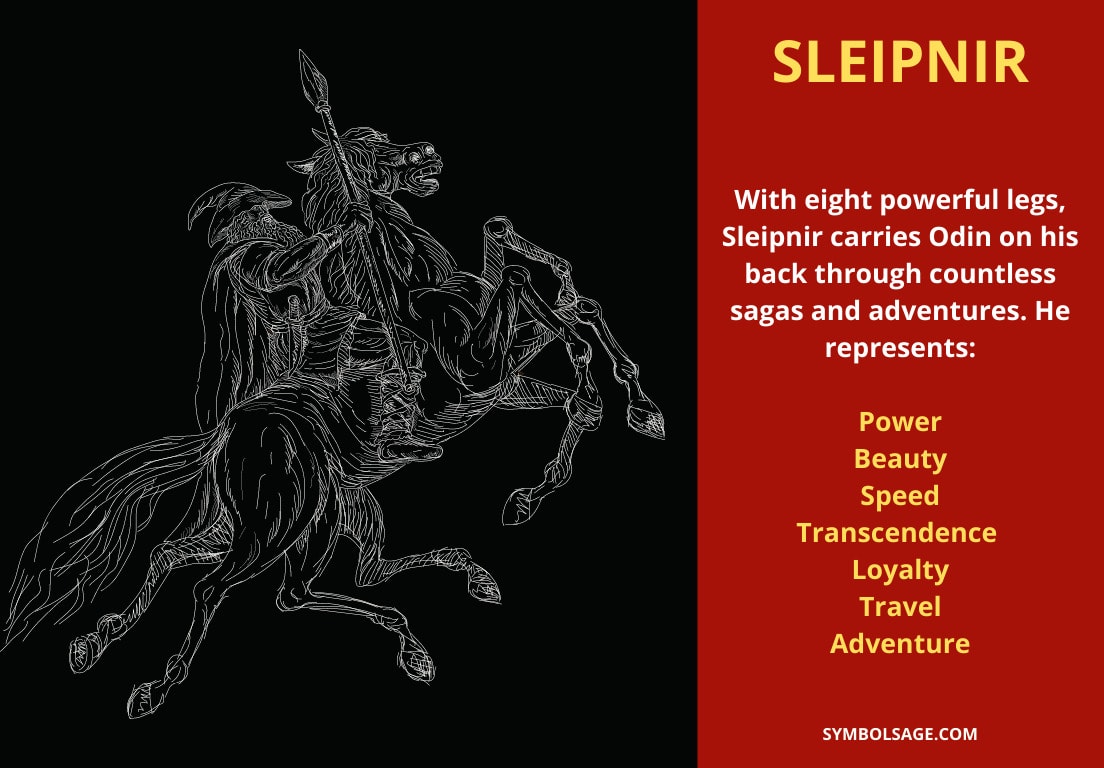
Who is Sleipnir?
With a gorgeous grey coat and an impressive set of eight legs, Sleipnir is the lord of all horses in Norse mythology. A constant companion of the Allfather Odin, Sleipnir is always by his side whether it’s time to travel to Hel, to ride into battle, or to take a stroll throughout Asgard.
Sleipnir’s name translates as “Slippery”, i.e. he’s such a fast runner, he cannot be caught. Even more curiously – Sleipnir is a nephew of Odin as he is the son of Odin’s brother Loki. To make matters even more bizarre, Loki is Sleipnir’s mother and not his father.
Sleipnir’s Curious Inception
The story of Sleipnir’s inception is one the most famous and hilarious myths in all of Norse mythology. This is also the story of Asgard’s founding. In the 42nd chapter of the Prose Edda book Gylfaginning, it’s told how the gods settled in Asgard and decided to fortify it by building an impenetrable wall around it.
To help them do that, an unnamed builder volunteered his services. He promised to build a great wall around Asgard in just three seasons and all the builder asked for in return was to be given the hand of the fertility goddess Freyja, as well as the sun and the moon.
Judging this to be too high of a price but still wanting an adequate fortification around Asgard, the gods agreed, but added a condition – the builder wasn’t allowed to use any extra help to complete the task on time. This way, the gods figured the builder would be able to complete quite a bit of the wall and create a good fortification but wouldn’t be able to complete it perfectly, meaning that they wouldn’t need to give him his rewards.
This is where Loki stepped in and once again ruined the gods’ plans. The builder asked the gods to allow him to use his horse while building and carrying materials. The gods were hesitant as this went against their condition, but Loki jumped in and gave the builder his permission.
As the builder started working, it turned out that he was using the help of no ordinary horse. Instead, his stallion was Svaðilfari, or “Troublesome Traveler” in Old Norse. This powerful horse was able to carry astonishing loads of stone and wood and enabled the builder to come very close to completing his task on time.
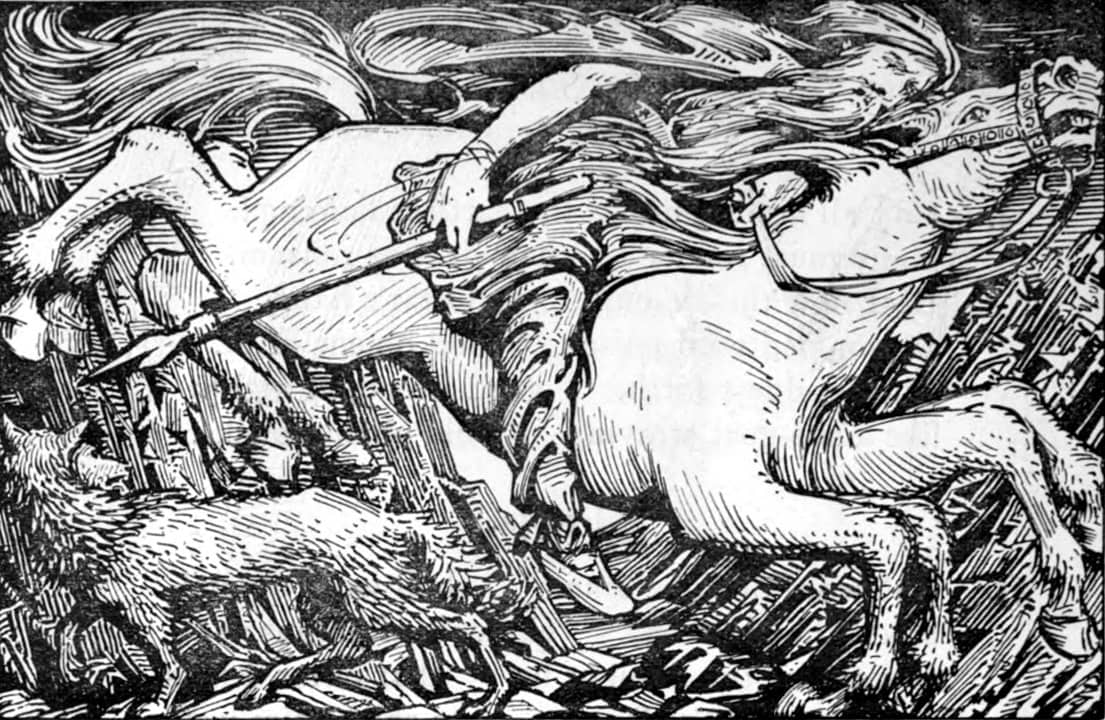
Furious with Loki for compromising their plans, the gods told him to find a way to stop the builder from completing the wall in time. They just couldn’t give the builder the sun, the moon, and Freyja too.
Pushed into a corner because he couldn’t directly obstruct the builder’s work, Loki decided to lure his horse away. So, being the skilled shapeshifter he is, Loki transformed into a beautiful mare and came out of a nearby forest. Thanks to this trickery, Loki easily seduced the stallion and Svaðilfari chased Loki into the forest.
Astonishingly, Loki’s plan succeeded, and the builder couldn’t complete his wall on time. However, Loki’s improvised plan worked a little too well and Svaðilfari chased the transformed Loki for the whole day and eventually managed to catch him.
After a long and uncensored encounter, Loki found himself with an eight-legged horse baby growing in his belly – that horse was Sleipnir. Once Loki gave birth to Sleipnir he gave him to Odin as a gift.
Odin’s Fylgja
Sleipnir wasn’t just a horse Odin occasionally rode on – he was one of the Allfather’s many fylgja spirits. In Norse mythology, fylgja are animals or mythological beasts (or, sometimes, women) who are the companions of gods and heroes.
The word fylgja (pl fylgjur) roughly translates as “wraith” or “fetch”. In Odin’s case, his other famous fylgjur are the ravens Hugin and Munin, as well as the legendary Valkyrie warrior women who help him carry the souls of dead heroes into Valhalla.
These fylgja spirits aren’t just magical companions and pets, however – they are viewed as literal extensions of their owner’s spirit. The Valkyries aren’t just Odin’s servants – they are an extension of his will. Hugin and Munin aren’t just pets – they are a part of Odin’s wisdom and sight.
Similarly, despite being his own creature (with a rather absurd lineage) Sleipnir is also an extension of Odin’s power, his shamanistic prowess, and his godhood, allowing him to travel across the sky and the universe, all across the Nine Realms.
Symbols and Symbolism of Sleipnir
At first glance, Sleipnir doesn’t seem to symbolize anything particular, other than the dangers of transforming yourself into a mare to seduce a powerful stallion. However, Sleipnir is also one of the most emblematic symbols of shamanism and magic in Norse mythology.
According to the English folklorist Hilda Ellis Davidson, the eight-legged horse of Odin is the typical steed of the shaman as when shamans themselves often travel to the underworld or to distant worlds, that travel is usually represented as riding on some bird or animal.
After all, in Norse mythology, Odin is not just the Allfather god and a lord of war, he is also the god of the shamanistic seidr magic. In other words, as the Norse shamans attempted to travel spiritually across the Nine Realms – a process that usually involved a lot of hallucinogenic herbal tea and other drugs – they’d often see themselves traveling on a magical eight-legged horse across the sky.
And, of course, in a more direct sense, Sleipnir does symbolize the power, beauty, and usefulness of horses. While the Norse weren’t the most prominent horse-riding culture because of the harsh climate making that difficult, they did have and revere horses as many other cultures did. Only the best and most well-off Vikings had horses, and Sleipnir was the best horse in the world, fitting for the Allfather himself.
Importance of Sleipnir in Modern Culture
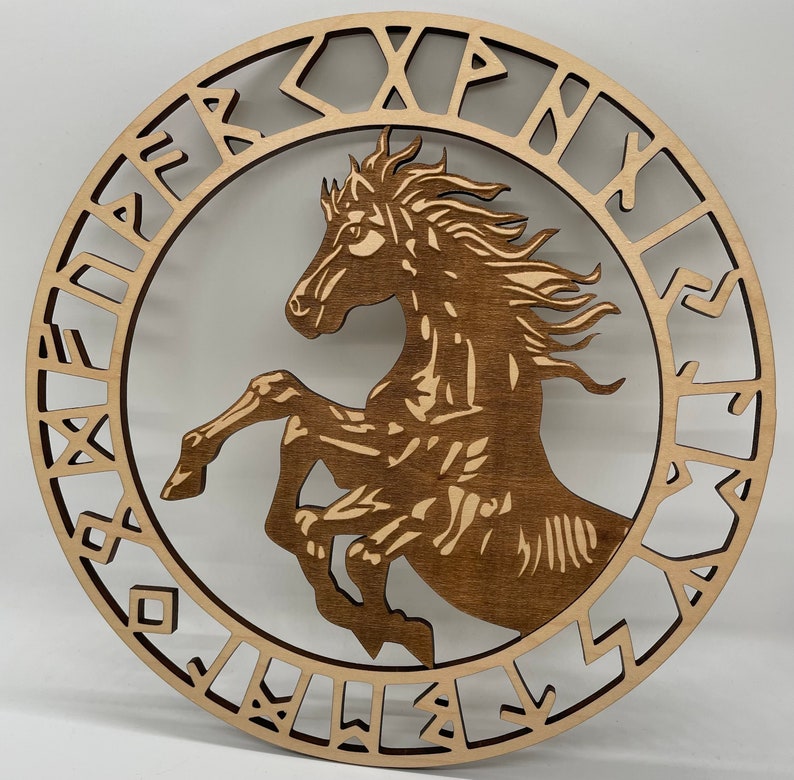
Historically, Sleipnir has often been depicted in statues, paintings, wooden reliefs, and other art. Even more commonly, his name is one of the most common names of horses in Northern Europe alongside the names of Svaðilfari and Loki. Boats were also very often named after the eight-legged horse which fits them not only because they assisted the Vikings’ travels but because Viking boats had numerous oars as well as masts.
Odin’s horse is also said to be the creator of the magical Ásbyrgi – a gorgeous horseshoe-shaped canyon in Iceland. Legend says that the mighty horse accidentally flew too close to the ground on one of Odin’s trips across the sky and happened to step into Iceland with one of its eight powerful hooves.
Sleipnir hasn’t made it into too many story-telling arts as of late, likely because of the difficulty of portraying an eight-legged horse well on the screen or the page. The concept of “a lord of horses” isn’t strange in fantasy literature, of course, with Shadowfax being a popular example in Tolkien’s Lord of the Rings. However, unless such a character is portrayed with eight legs, it’d be a stretch to call them a representation of Sleipnir.
FAQs About Sleipnir
leipnir is the offspring of a god, but he isn’t a god himself. He’s the horse of Odin and one of his shamanic spirits.
Sleipnir’s eight legs may be a connection to horse related divine twins often found in Indo-European cultures. The extra pair of legs he’s born with could be an indication of a pair of horses.
Although Loki is a male deity, he transforms himself into a mare to entice the stallion Svaðilfari, following which ‘he’ becomes pregnant.
Sleipnir represents speed, strength, power, loyalty, travel, adventure, and transcendence.




